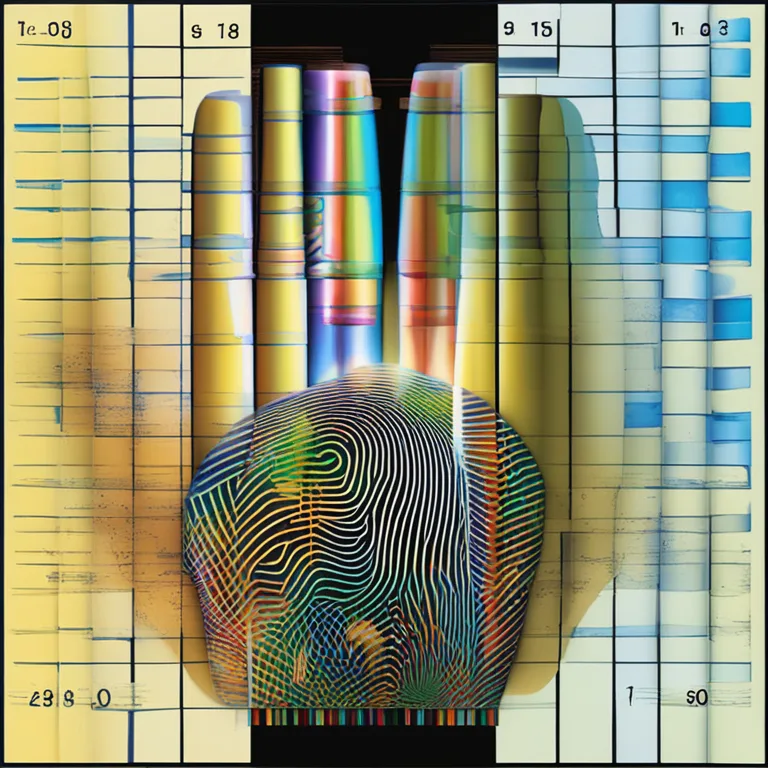
The Genetic Roots of Palm Lines
Delving into the intricacies of dermatoglyphics—the study of the pattern of ridges on the skin—and its relevance to palmistry could shed light on how much of our palm's story is written in our DNA.
article by Nora Pennington
Palmistry's Foundation: Nature or Nurture?
Palmistry, the ancient practice of interpreting lines on the palm to uncover personal insights, has been a fascinating topic for centuries. However, in the modern era of genetics, an intriguing question emerges: Are the mysterious lines etched on our palms inherited from our ancestors? This foray into the genetic basis of palm lines seeks to blend the mystical with the scientific, offering a comprehensive overview of the intersection where genetics and palmistry converge.

Fingerprint Twins: A Genetic Clue?
Identical twins, known for sharing the same genetic makeup, have long been a source of fascination for researchers studying genetics in relation to palmistry. Despite the shared DNA, their palm lines are not carbon copies. While some studies suggest a genetic predisposition to certain ridge patterns, the palm lines themselves are influenced by a combination of genetics and environmental factors during fetal development. These findings imply that while there may be hereditary components at play, palm lines are also uniquely shaped by individual life circumstances, corroborating that palmistry cannot be solely explained by genetics.

Prenatal Influences on Palm Patterns
The intricate dance between genetics and environment begins in the womb, where factors such as blood pressure, nutrition, and the baby's positioning contribute to the formation of palm lines. Scientific studies suggest that these lines start forming around the 12th week of pregnancy, but the forces that sculpt them reach beyond mere heredity. Researchers debate the extent to which these in utero environmental conditions might alter genetic predispositions, but what stands clear is that the uniqueness of each individual's palm lines parallels the uniqueness of their gestational journey.

The Genetic Mosaic of Your Palm
While the genetic influence on palm lines cannot be denied, calling them purely genetic would be an oversimplification. The process by which palm lines form involves a coalescence of genetic factors interacting with random events during embryonic development. The complexity of these variables ensures that even among genetically identical individuals, the palm lines will differ. Pondering this fact, palmistry enthusiasts may consider their palms not just as maps of destiny, but as mosaics of both ancestry and experience.

From Genetics to Palmistry: Bridging the Gap
As palmistry persists through the ages, the quest for substantiation leads us toward an interdisciplinary approach that includes genetics. By acknowledging the hereditary traits that influence our palm lines while recognizing the unique story each hand tells, palmists of the future may weave genetic understanding into their readings. Doing so could transform the art into a more personalized narrative that reflects the individual tapestry of life, interwoven with threads of genetic heritage.
Conclusion: Inheritance of Personal Revelation
In conclusion, while the presence of genetic factors in the formation of palm lines is undeniable, they are not the sole architects of these enigmatic features. The complex interplay between heredity and life’s array of influences gives rise to the distinct character seen in the palms of individuals worldwide. This insight does not diminish the value of palmistry but rather enriches it with a deeper understanding of human diversity and the multifaceted nature of our existence.
Published: 1/5/2024
Modified: 1/5/2024
More predictions
Come back here soon to learn more about yourself and your future


The Sun Line in Palmistry: A Ray of Personal Brilliance
Discover the significance of the Sun Line in palmistry and how it reflects your potential for prosperity, creativity, and fame in this insightful article.


The Dynamic Nature of Palm Lines
Discover the fascinating reasons behind the changing patterns of your palm lines and how they reflect the story of your life.


The Sun Line: A Ray of Personal Brilliance
Discover the significance of the Sun Line on your palm and its implications for fame, success, and creativity in palmistry practices.